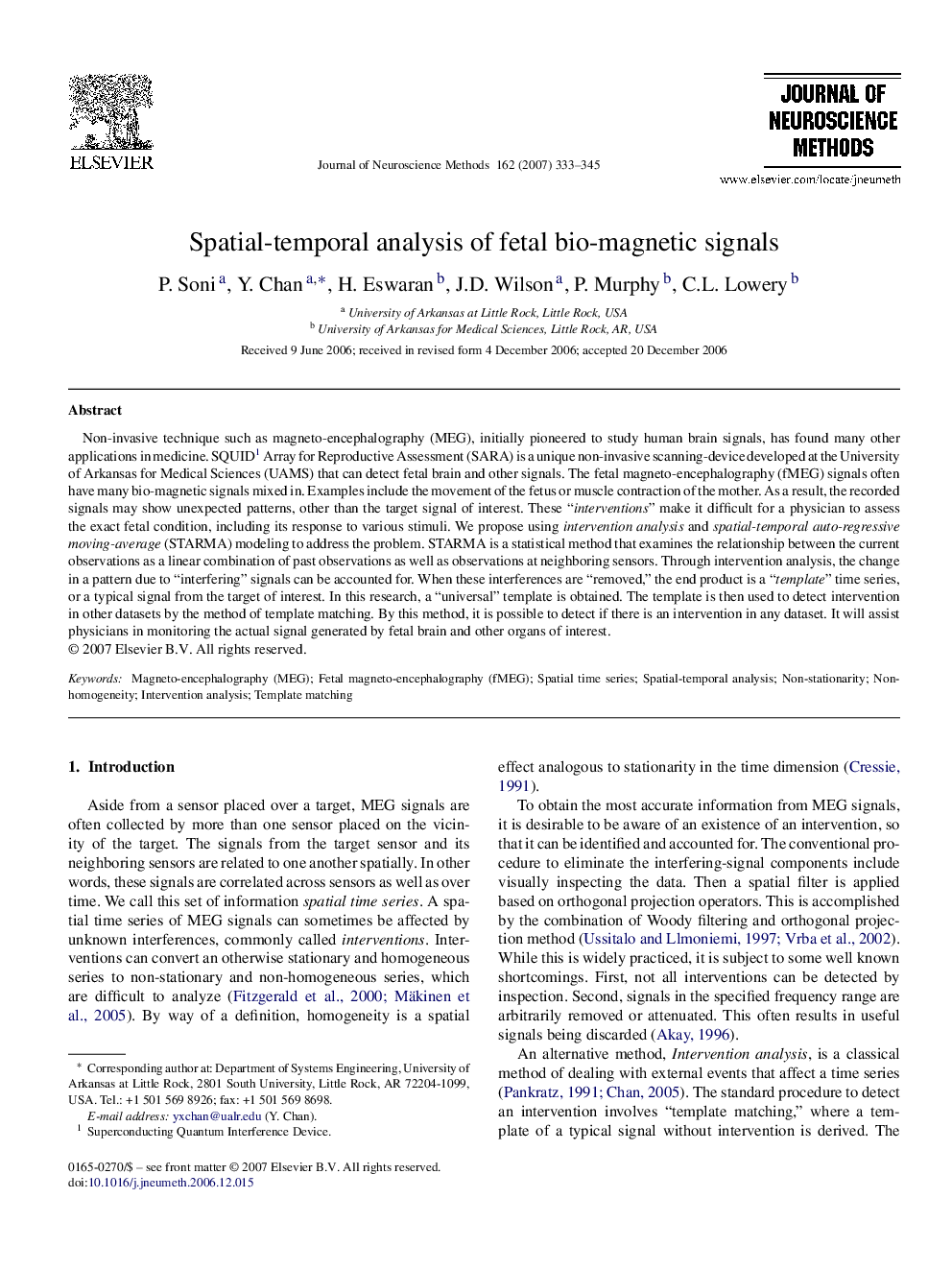| Article ID | Journal | Published Year | Pages | File Type |
|---|---|---|---|---|
| 6270508 | Journal of Neuroscience Methods | 2007 | 13 Pages |
Abstract
Non-invasive technique such as magneto-encephalography (MEG), initially pioneered to study human brain signals, has found many other applications in medicine. SQUID1 Array for Reproductive Assessment (SARA) is a unique non-invasive scanning-device developed at the University of Arkansas for Medical Sciences (UAMS) that can detect fetal brain and other signals. The fetal magneto-encephalography (fMEG) signals often have many bio-magnetic signals mixed in. Examples include the movement of the fetus or muscle contraction of the mother. As a result, the recorded signals may show unexpected patterns, other than the target signal of interest. These “interventions” make it difficult for a physician to assess the exact fetal condition, including its response to various stimuli. We propose using intervention analysis and spatial-temporal auto-regressive moving-average (STARMA) modeling to address the problem. STARMA is a statistical method that examines the relationship between the current observations as a linear combination of past observations as well as observations at neighboring sensors. Through intervention analysis, the change in a pattern due to “interfering” signals can be accounted for. When these interferences are “removed,” the end product is a “template” time series, or a typical signal from the target of interest. In this research, a “universal” template is obtained. The template is then used to detect intervention in other datasets by the method of template matching. By this method, it is possible to detect if there is an intervention in any dataset. It will assist physicians in monitoring the actual signal generated by fetal brain and other organs of interest.
Keywords
Related Topics
Life Sciences
Neuroscience
Neuroscience (General)
Authors
P. Soni, Y. Chan, H. Eswaran, J.D. Wilson, P. Murphy, C.L. Lowery,
